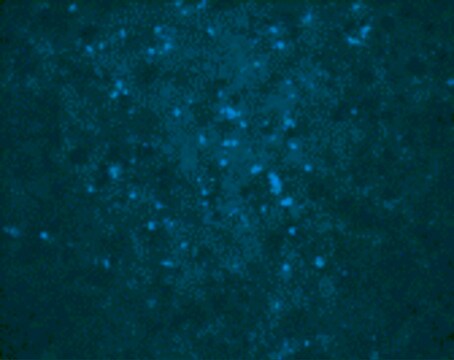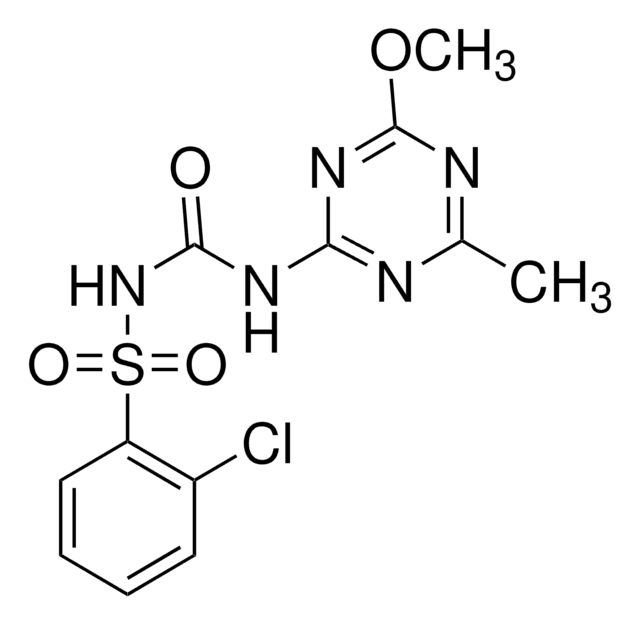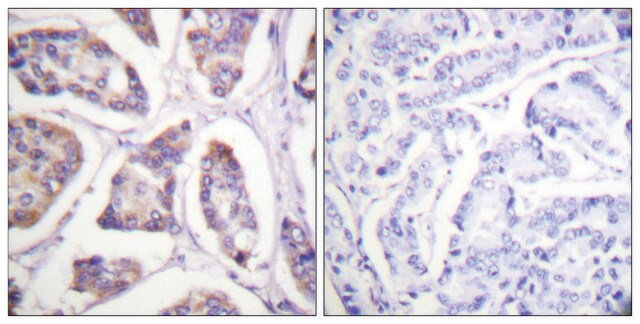32458
Glycarbylamide
PESTANAL®, analytical standard
Synonym(s):
4,5-Imidazoledicarboxamide
Sign Into View Organizational & Contract Pricing
All Photos(1)
About This Item
Empirical Formula (Hill Notation):
C5H6N4O2
CAS Number:
Molecular Weight:
154.13
Beilstein:
147831
MDL number:
UNSPSC Code:
41116107
PubChem Substance ID:
NACRES:
NA.24
Recommended Products
grade
analytical standard
Quality Level
product line
PESTANAL®
shelf life
limited shelf life, expiry date on the label
technique(s)
HPLC: suitable
gas chromatography (GC): suitable
format
neat
SMILES string
NC(=O)c1nc[nH]c1C(N)=O
InChI
1S/C5H6N4O2/c6-4(10)2-3(5(7)11)9-1-8-2/h1H,(H2,6,10)(H2,7,11)(H,8,9)
InChI key
NNWAARLSYSBVPB-UHFFFAOYSA-N
Looking for similar products? Visit Product Comparison Guide
Application
Glycarbylamide may be used as an analytical reference standard for the determination of the analyte in chicken liver extracts and tissues by high performance liquid chromatography (HPLC) with post-column reaction.
Refer to the product′s Certificate of Analysis for more information on a suitable instrument technique. Contact Technical Service for further support.
Legal Information
PESTANAL is a registered trademark of Merck KGaA, Darmstadt, Germany
Signal Word
Warning
Hazard Statements
Precautionary Statements
Hazard Classifications
Eye Irrit. 2
Storage Class Code
11 - Combustible Solids
WGK
WGK 3
Flash Point(F)
Not applicable
Flash Point(C)
Not applicable
Choose from one of the most recent versions:
Already Own This Product?
Find documentation for the products that you have recently purchased in the Document Library.
Y Yamamoto et al.
Journal of AOAC International, 82(2), 248-250 (1999-04-07)
A high-performance liquid chromatographic (HPLC) method for determining glycarbylamide (GB) in chicken tissue was developed. GB was extracted with acetonitrile, followed by solid-phase extraction cleanup using a Bond Elut cartridge column with neutral alumina. After the extract had been evaporated
H D Chapman
Veterinary parasitology, 15(1), 11-27 (1984-07-01)
Drug resistance is now recognised as a major cause of the failure of drugs to control coccidiosis in the fowl. In this article, biological, biochemical and genetic aspects of resistance in Eimeria are reviewed and some of the problems that
Yasuharu Mizuno et al.
Shokuhin eiseigaku zasshi. Journal of the Food Hygienic Society of Japan, 47(6), 293-295 (2007-01-19)
A newly developed HPLC method for determination of glycarbylamide (GB) in chicken liver was applied to other tissues (muscle, fat and kidney). The recoveries of GB in muscle, fat and kidney were 87.2% (CV 0.5), 91.3% (CV 4.7), 79.7% (CV
Noriko Tajima et al.
Shokuhin eiseigaku zasshi. Journal of the Food Hygienic Society of Japan, 47(6), 254-257 (2007-01-19)
A new and simple analytical method for glycarbylamide (GB) based on the formation of nickel chelate was developed. The proposed method is as follows: sample solution is mixed with 0.08 mmol/L nickel nitrate in 0.2 mol/L carbonate buffer (pH 9.0)
Daria Pingot et al.
Medycyna pracy, 64(2), 259-271 (2013-07-09)
Acrylamide is a synthetic chemical compound commonly used in many branches of industry. It is mainly used in the synthesis of polyacrylamides, which are widely employed in plastics, paints, varnishes, adhesives and mortars production. Acrylamide is also applied in the
Our team of scientists has experience in all areas of research including Life Science, Material Science, Chemical Synthesis, Chromatography, Analytical and many others.
Contact Technical Service









